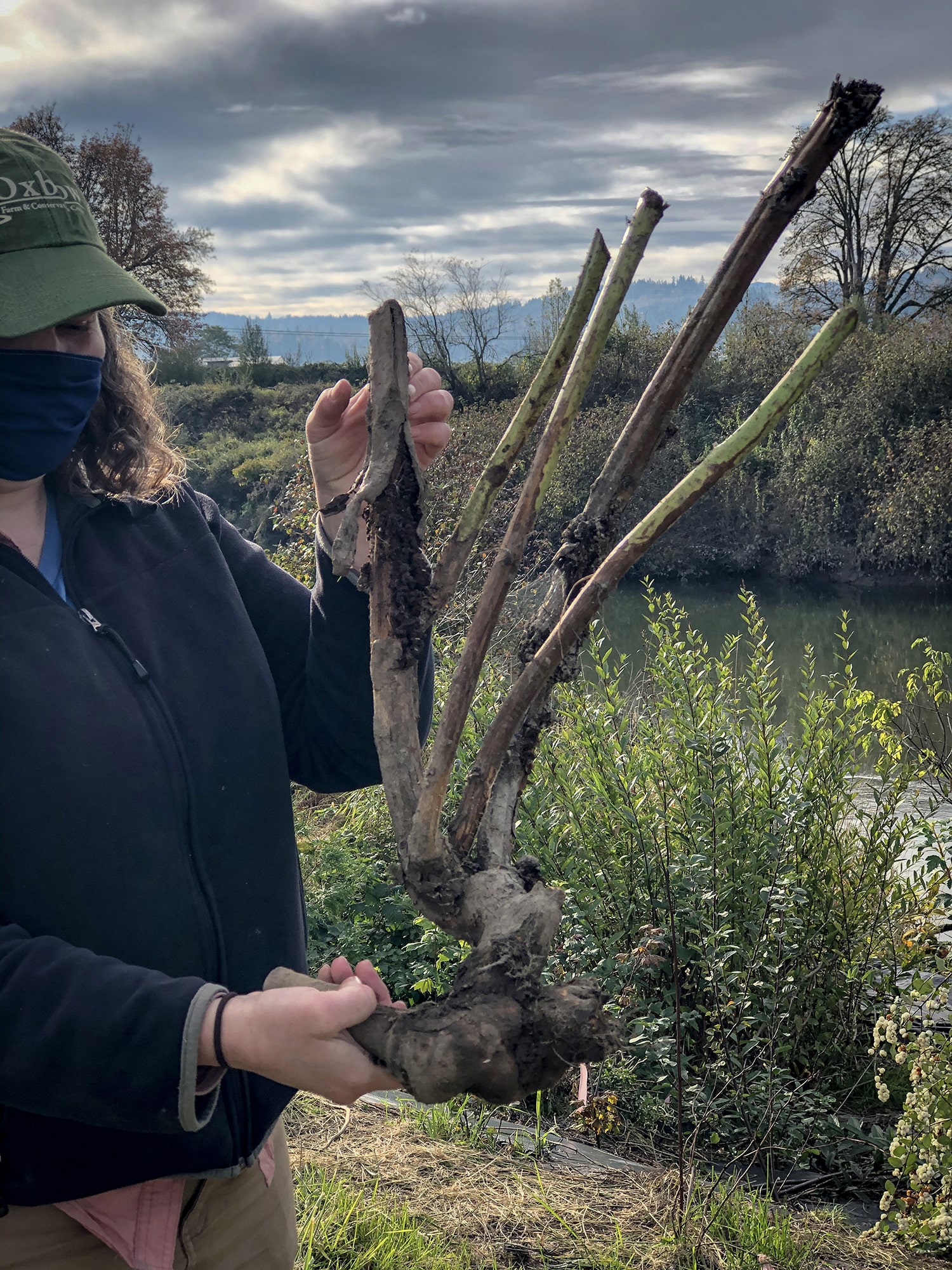Invasive Blackberry
Characteristics
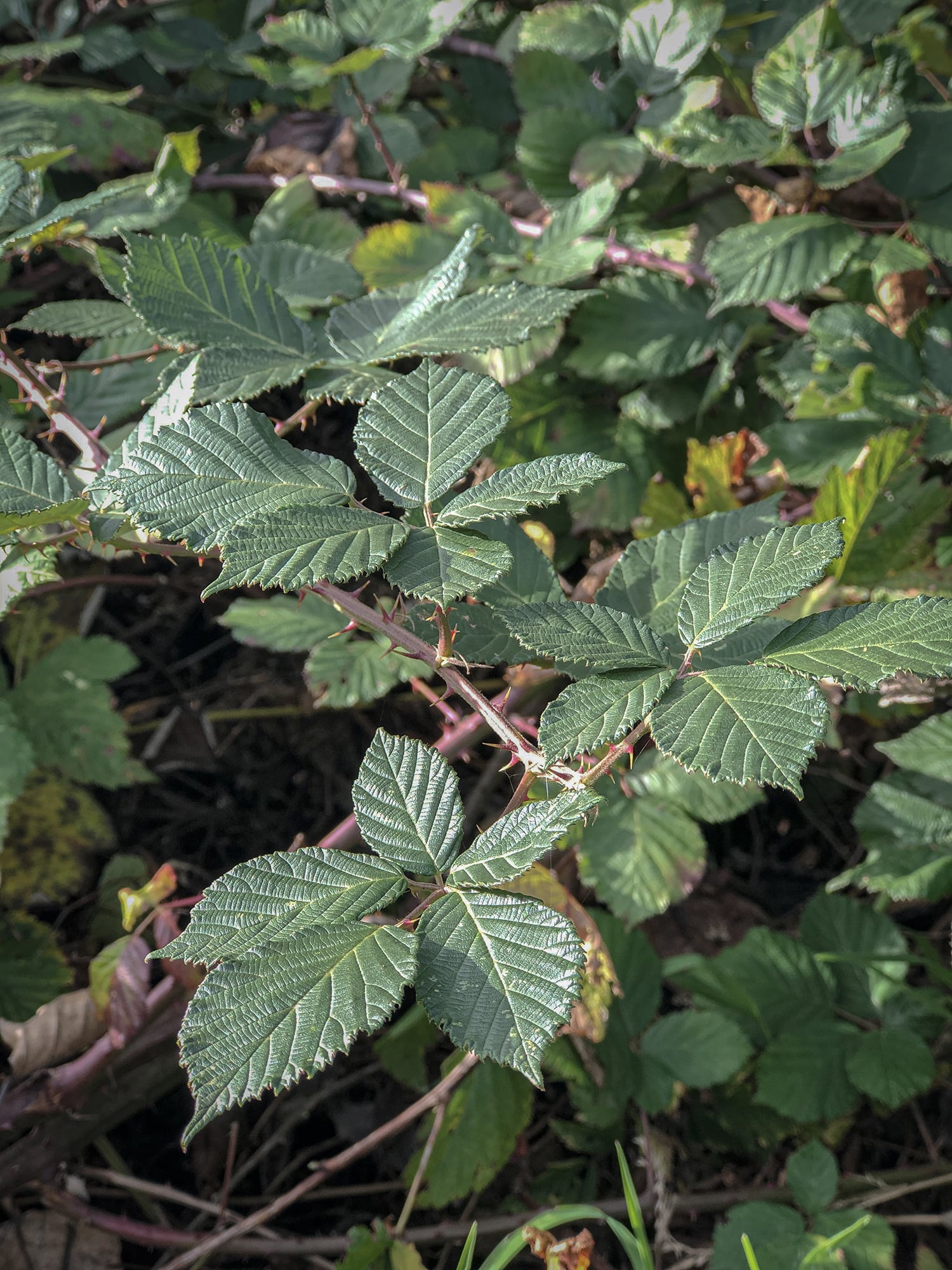
Himalayan and evergreen blackberry both form thorny shrubs and brambles that begin to flower in early summer. They have pink to white 5-petaled flowers and produce copious dark purple blackberry fruit in late summer (August-September). They both have canes that can get quite thick (thumb to wrist sized), have prominent curved spines, leaves that grow in clusters of three to five leaves, and they sprout from large root balls. When cut, the large canes have a pentagon cross-section. Both plants can grow to 15 feet in height and their canes can grow to 40 feet in length. Their canes grow in somewhat rigid arcs that create a dense thicket or they will climb over other shrubs and trees, using their structure to get more access to light. Himalayan blackberry leaves are entire and oblong and taper to a point at the end of the leaf. Evergreen/cut-leaf blackberry look somewhat like Himalayan leaves that have been cut into a lacy pattern. The root balls of blackberry plants allow them to survive all sorts of above-ground damage and their long trailing canes can re-sprout where the tip touches the ground, forming new rooted plants. The berries are quite tasty and their seeds are often spread by animals that eat the fruit.
Blackberry will grow readily in disturbed areas with moderate to full sun and can take over in a dappled forest understory, taking particular advantage of gaps in the tree canopy. They grow well around water, but not in wetlands that are flooded for too long.
Native Plant Distinctions
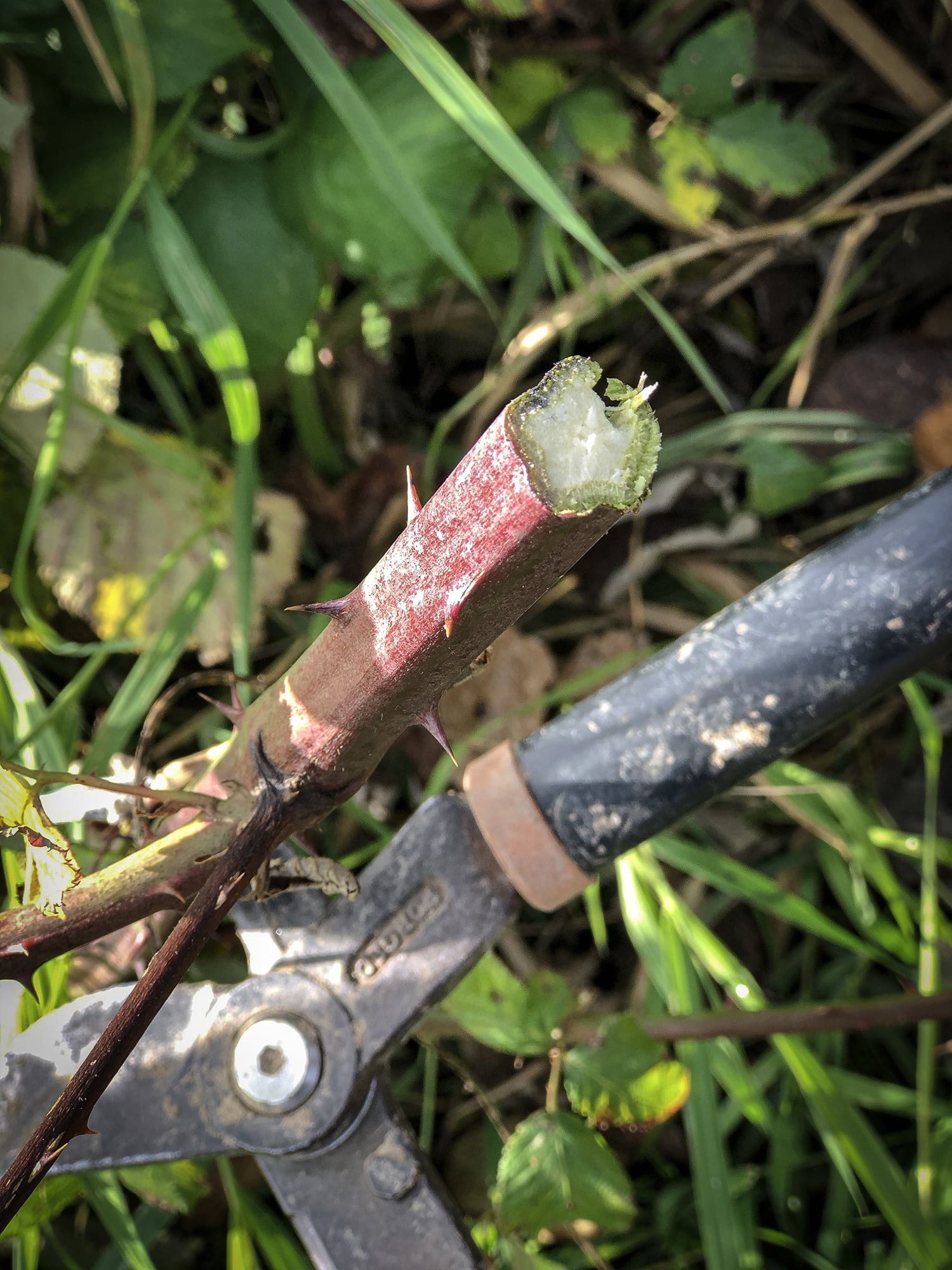
There are several other native species that are in the Rubus genus that may be mistaken for invasive Himalayan and evergreen blackberries. There is the native trailing blackberry (Rubus ursinus) which can be distinguished by its much thinner round purplish-green vines that are very flexible with much smaller spines and its leaves only ever grow in clusters of three. Salmonberry (Rubus spectabilis) is another berry-producing native that has distinctive pink to magenta flowers and berries that range from yellow to purple when ripe. Salmonberry grows upright in a way that is somewhat like blackberry, especially in young plants, but it doesn’t tend to mound over other shrubs or use them as supports, its canes are much shorter in length and often point upwards, the stems are round in cross-section, it is generally less spiny and its thorns are smaller, and its leaves only grow in clusters of three. Without looking carefully, you may also confuse roses (Rosa sp.), for blackberries. Roses have very robust spines that can look similar to blackberry canes, but their stems are round and their leaves are very different with smaller, rounder leaves in bigger clusters.
Why is it here? Why don’t we want it?
Both Himalayan and evergreen blackberry varieties were brought to North America from Eurasia as food plants. Neither are actually from the Himalayan region. The plants brought for food production quickly escaped into wild places and took root in all sorts of natural areas. They especially prosper in areas that have been disturbed. The quick-growing thickets are often dense enough that tree seedlings and other young plants do not get enough light to grow. This allows blackberries to take over a bigger and bigger area as large trees die and new tree and shrub seedlings are unable to replace them. This process leaves a forest with very low bio-diversity and eventually leaves nothing but blackberry in place.
While some birds can nest in the thickets and some animals enjoy the berries, the lack of diversity disrupts the ecosystem. It causes a shortage of food for most animals most of the year, a reduction of diverse flowers for pollinators, and threatens habitats for plants and animals alike. Along river banks where blackberry often takes over, the lack of forest canopy and readily available woody debris can be very harmful to salmon populations. Young salmon prefer cool waters that tree canopies provide. They also rely on woody debris such as roots and logs to create pockets of slow water where they can rest. Blackberries are so widespread that the only hope we have is to reduce their numbers, especially in places that we are trying to maintain as natural areas and wildlife habitats.
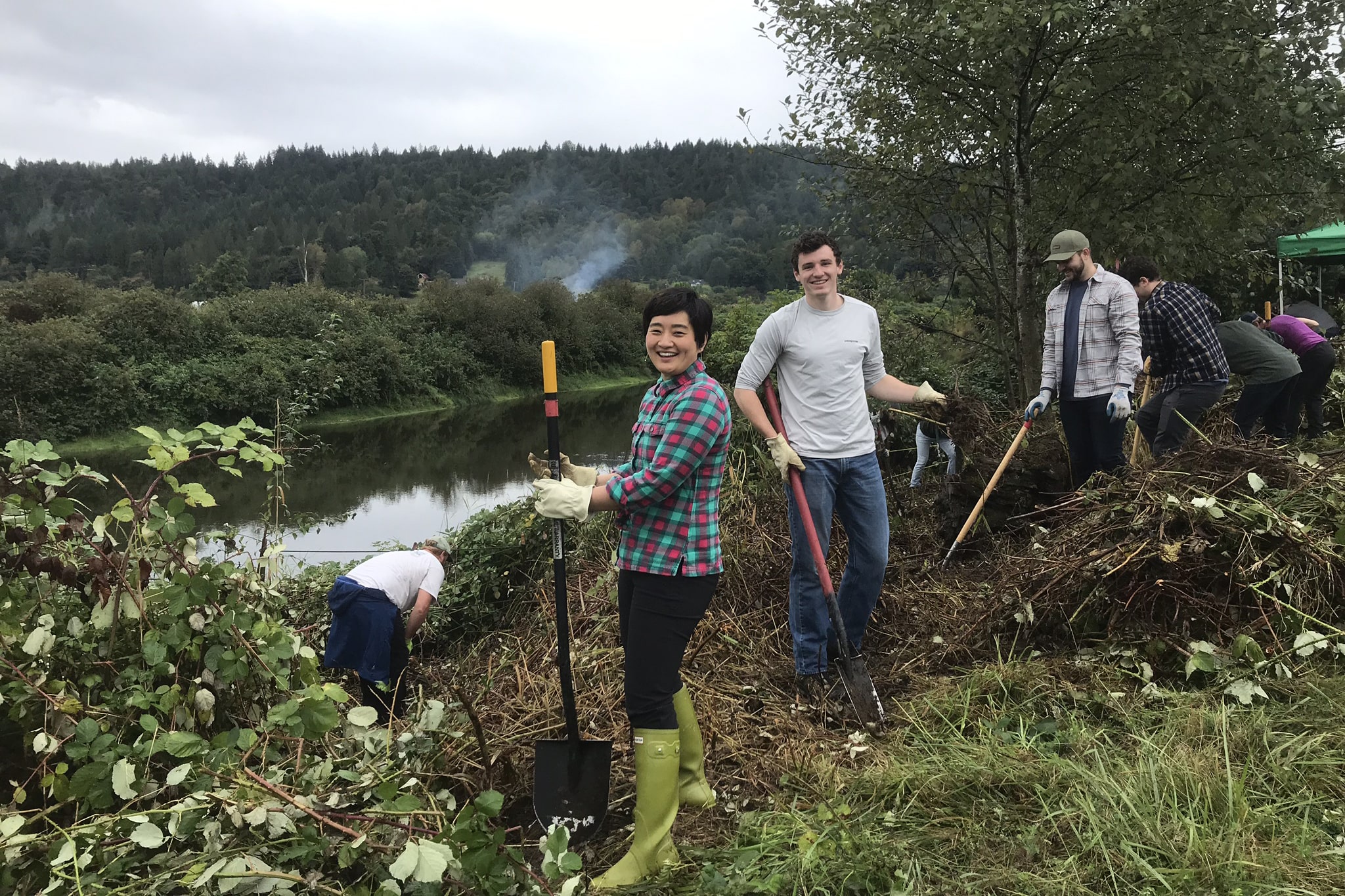
What is Oxbow doing about blackberry?
As with many other places in the Pacific Northwest, blackberries are a fact of life at Oxbow and they have to be dealt with in a methodical and continuous way. While we and our volunteers work very hard to keep blackberry out of our restored and natural areas, it continues to grow in spaces that we haven’t gotten to yet. Keeping blackberry from reclaiming our newly (and even our less recently) restored areas is what the majority of our habitat restoration volunteer events focus on.
Oxbow has been pushing back against the tide of blackberry since its beginnings. Stewardship Partners took a leading role in the early days of Oxbow and started restoring areas along the river and oxbow lake. They are still maintaining these spaces today and are expanding forest plantings. When Oxbow hired its staff ecologist Matt Distler, he created a restoration plan that methodically tackles blackberry in key places. Priorities were set for reducing blackberries in these areas:
- fairly forested territories full of native plants
- spaces that had previously been restored, but needed maintenance
- stream sides and waterways to help increase habitat for critical salmon populations
Removal
Our primary method of blackberry removal, both in restored and soon-to-be-restored areas includes:
- mowing or cutting back the canes
- digging out blackberry roots
- replanting native vegetation
Blackberry roots and even canes that are touching the ground can re-root. We collect our roots into one pile that we can keep an eye on while we let the roots dry out. We cut and place the canes in a separate pile. Once they dry, we will spread them around as a spiky mulch.
Since many of our restoration efforts are along the Snoqualmie River, re-planting is key. Leaving freshly dug soil along a river without any plants leads to serious erosion problems. Once an area is cleared of blackberry and planted with native plants, we plan for years of maintenance. Restored areas are visited on a regular basis to remove new blackberry growth. Maintenance is needed until the restored area is either shaded enough or dense enough that blackberry can’t get established. But even then, we are often stuck maintaining the edges indefinitely. That is why having a plan that works from least to most infested is so important. We focus on connecting natural areas so that edge maintenance is reduced. For us, our volunteers are also of critical importance. They provide so much of their time and energy to create these restored areas.
As Oxbow continues to grow and develop its conservation program, we have begun to reach out to others in the Snoqualmie Valley to help with blackberry removal and reforestation beyond Oxbow’s borders.
What you can do about blackberry on your property
The non-native blackberries are unlikely to ever be completely eradicated from our area. They are not required to be removed by King County. But, if you have Himalayan or Evergreen/cut-leaf blackberry in your yard, we recommend clearing it out if you can. There is a variety of ways that you can combat blackberries from digging it out to mowing with goats. Mowing, whether with loppers or goats, should either be on a very regular cycle (ideally monthly), or should be paired with another technique such as digging the roots out. Plants that are only mowed once or occasionally will easily grow back and will get enough resources that their root ball will remain unaffected. A mowing schedule may need to be maintained for ten years or more to be completely effective in removing blackberries. Even areas that you dig will need to be checked up on and revisited on at least a yearly basis. If you want to compost the blackberry canes, allow them to dry completely before adding them to your pile or spreading them. You can also burn the roots and canes. Root balls and plant crowns should go into your yard waste.
If you have a large area that is affected by blackberry, keep in mind that you should start work from the least affected area and work in a way that reduces edges. Don’t forget to put new plants in after taking blackberries out. New plants provide shade and competition that can make your job so much easier and it provides habitat for wildlife. Although we generally discourage the use of herbicides, they are effective when used correctly. And in some specific cases, such as where erosion is a problem, they may be the more eco-friendly option. If you do choose to use herbicides, make sure you follow all directions and recommendations.
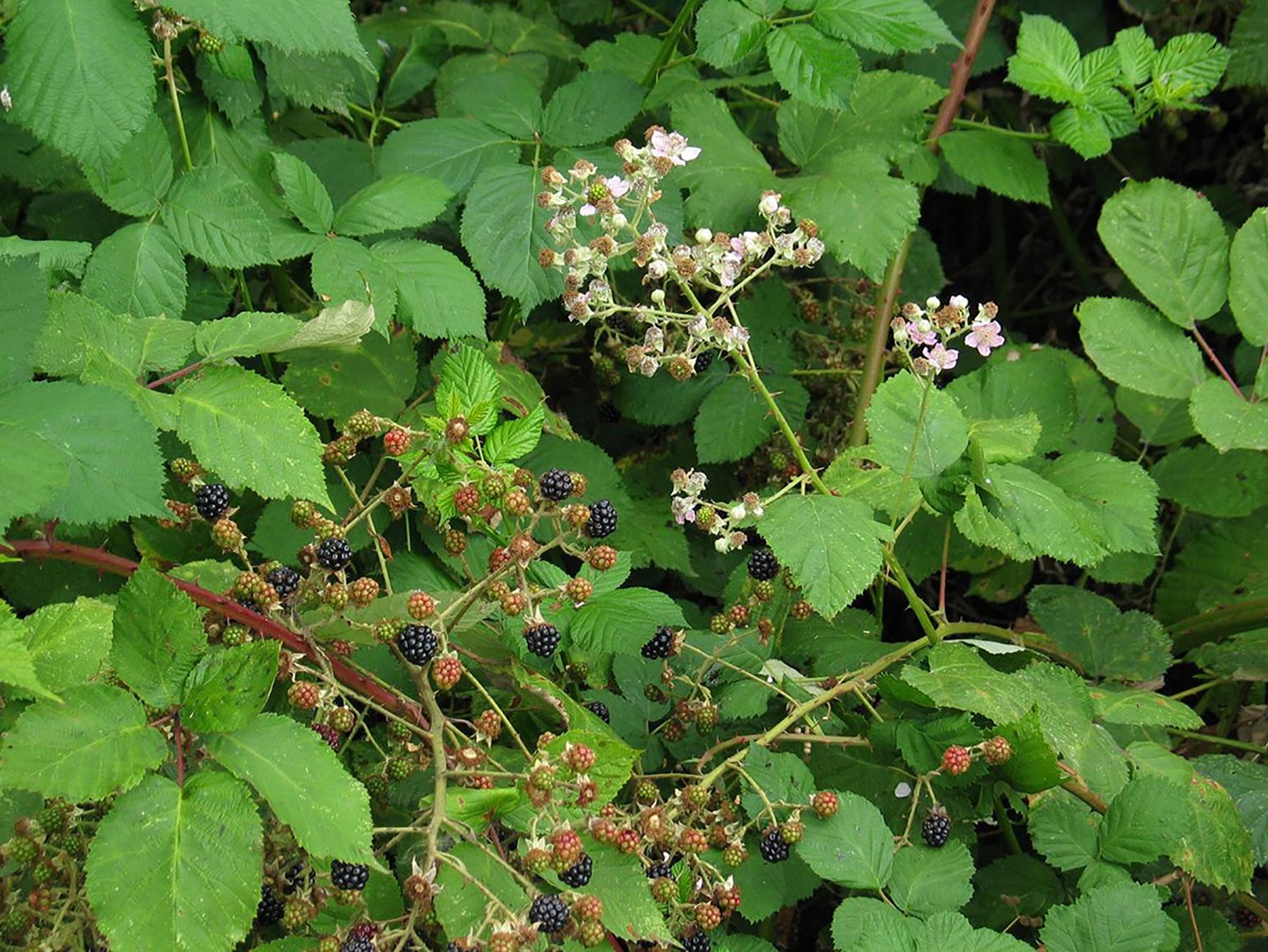 Since blackberries can provide habitat for birds, be sure to keep an eye out and avoid nesting birds. Consider holding off on clearing until nesting season is over. If blackberries are the only habitat around, consider taking it out in sections on an annual basis so that the birds still have somewhere to nest while you’re growing a new and improved nesting habitat for them.
Since blackberries can provide habitat for birds, be sure to keep an eye out and avoid nesting birds. Consider holding off on clearing until nesting season is over. If blackberries are the only habitat around, consider taking it out in sections on an annual basis so that the birds still have somewhere to nest while you’re growing a new and improved nesting habitat for them.
If you love picking and eating blackberries in your back yard, we recommend cultivated varieties as well as the native trailing blackberry that all produce delicious fruit. But, if you’re absolutely smitten with the invasive variety, please keep it in a narrow hedge that you maintain and shape on a yearly basis. There’s no point in a blackberry patch where you can only reach a small fraction of the berries. Be sure to manage blackberries on your property line so that you aren’t causing it to spread into your neighbors’ yards.
King County Noxious Weed Control Program has a document with all sorts of great techniques and advice on Best Management Practices for blackberry on their website and they discuss all sorts of treatment options, including herbicide, in much more detail. For more information about blackberry, check out King County Noxious Weeds at : https://www.kingcounty.gov/services/environment/animals-and-plants/noxious-weeds/weed-identification.aspx

